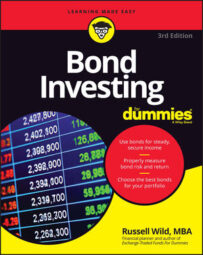Here are a few reasons Treasury bonds likely belong in your investment portfolio and what kind of returns you can realistically expect from these investments.
Turn to Treasuries in times of turmoil
When you buy Treasury bonds, not only do you get the full faith and credit of the U.S. government assuring you your money back, but you get other perks as well. For example, there’s no chance of an early call should interest rates fall. And the liquidity — the ability to sell your bond on the open market — is downright oceanic.
As far as another agency, such as Moody’s or Fitch, downgrading the rating on Treasuries, or S&P downgrading again, simply look at what happened after the S&P downgrade in 2011: Treasury prices soared for months afterward. The problems of downgrading (and the often resulting price tumbles), callability, and lack of liquidity are alien to investors in Treasuries (but all too common to investors in corporate bonds and municipal bonds).
Perhaps the most succulent thing about Treasuries, however, is their delightfully low correlation to the stock market. When the world is in turmoil and the economy starts to quiver, stocks tend to tumble. But Treasuries — as money pours in from investors looking for a safe place to hide — start to shine. History has seen this scenario over and over.
According to data from Ibbotson Associates, a Morningstar company, during the darkest economic days of September 1929 through June 1932, long-term Treasuries showed a total annualized return of 4.84 percent. Not bad for a time when the general price level was dropping.
During the bear market of September 2000 through September 2002, Treasuries returned an annual 12.81 percent as people flocked to safety and prevailing interest rates fell. In 2008, when the stock market plunged by nearly 40 percent and junk bonds took a very serious beating, long-term Treasury bonds returned nearly 26 percent.
And in 2011, the very year that the S&P downgraded Treasuries from AAA to AA, the government bonds again jumped 28 percent.
Disadvantages of Treasuries
The downside to Treasuries is this: modest returns over the very long run, and modest returns (almost certainly) looking forward. Since 1926, the U.S. stock market has seen an average annual return of 9.9 percent. Long-term government bonds have seen an average annual return of 5.5 percent.
These numbers are before inflation. After inflation, the numbers move quite far apart: 6.7 percent annual return for the stock market and 2.4 percent for Treasuries — a considerable real-return advantage for stocks. (Inflation eats away at your investment every day of the year, while interest is paid semiannually, so the formula for figuring post-inflation returns is a bit complicated.)
In recent decades, Treasuries have done spectacularly well, and the performance of stocks has been especially poor. In the 30 years from 1981 to 2011, long-term Treasuries have seen an annual return of 11.03 percent, which is 0.05 percent above the S&P 500.
The reasons for this historical anomaly are several:
People flock to safety in times of turmoil, and there has been quite a bit of turmoil lately. Not since the Great Depression has the stock market seen the volatility of the past several years.
While the U.S. government lost its S&P AAA rating, so have other countries, such as France and Austria. Several European nations, including Spain and Italy, saw their ratings drop not by one, but by several notches. So where could investors go for safety if not the United States?
Perhaps the largest contributor to high Treasury returns has been the steady drop in general interest rates over the past years. Do you remember how, in the early 1980s, you could get double-digit returns on a mere CD? When interest rates fall, bond yields go up. Ten-year Treasuries are now yielding roughly 2 percent; in 1981, they were yielding about 14 percent.
Can the Treasury rally continue? No, not really. The rally has most likely run out of steam. Long-term Treasuries, as a result of their sharp price increases in past years, are (as of 2012) yielding lower interest rates than ever.
Regardless of what happens in the stock markets (and no one can really know, can they?), the future of Treasuries — not in the next year, but in the next decade or so — is at least somewhat predictable.
Yes, world turmoil may continue, but interest rates cannot keep dropping as they have in the past. The return you get on Treasuries in the next decade will very, very likely return to its historical norm — that is, modest.
Yes, you want Treasuries in your portfolio. Given their modest expected returns, you don’t want overkill, however. Some Treasuries, some higher-yielding corporate or other bonds, some stock, some commodities, and maybe some real estate make the most sense for most people.
As for the fixed-income side of your portfolio, depending on your risk profile, you may want to put somewhere between one-quarter and one-half of your total bond allocation into Treasuries.

